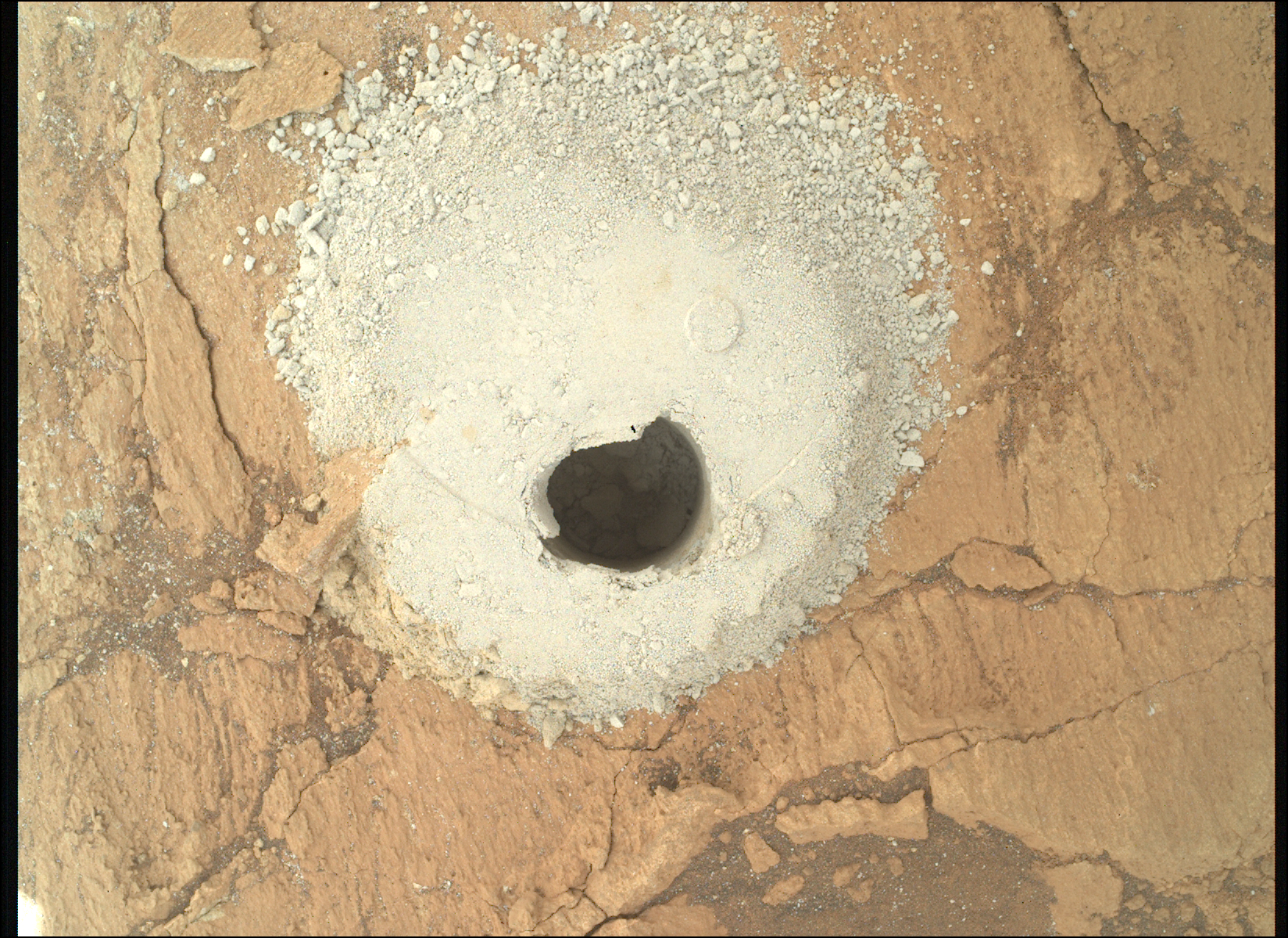2 min read
Written by Henry Manelski, Ph.D. student at Purdue University
The Perseverance team is always looking for creative ways to use the tools we have on Mars to maximize the science we do. On the arm of the rover sits the SHERLOC instrument, which specializes in detecting organic compounds and is crucial in our search for signs of past microbial life. But finding these organics isn’t easy. The uppermost surface of most rocks Perseverance finds on Mars have been exposed to ultraviolet rays from the sun and the long-term oxidative potential of the atmosphere, both of which have the potential to break down organic compounds. For this reason, obtaining SHERLOC measurements from a “fresh” rock face is ideal. Last week the rover cored a serpentine-rich rock aptly named “Green Gardens,” resulting in a fresh pile of drill tailings. To get this material ready for the SHERLOC instrument, which requires a smooth area to obtain a measurement, the science team did something for the first time on Mars: We smooshed it!
Using the contact sensor of our sampling system, designed to indicate when our drill is touching a rock as it prepares to take a core, Perseverance pressed down into the tailings pile, compacting it into a flat, stable patch for SHERLOC to investigate. This unorthodox approach worked perfectly! The resulting SHERLOC spectral scan of these fresh tailings — which include serpentine, a mineral of key astrobiological interest — was a success. These flattened drill tailings are a great example of how a bit of out-of-the-box (or out-of-this-world!) thinking helps us maximize science on Mars. With this success behind us, the rover is rolling west toward the heart of “Witch Hazel Hill,” where more ancient rocks — and who knows what surprises — await!
Share
Details
Last Updated Feb 28, 2025Related Terms
BlogsExplore More
4 min readSols 4466-4468: Heading Into the Small Canyon
Article 2 days ago2 min read
Sols 4464-4465: Making Good Progress
Article 2 days ago3 min read
Sols 4461-4463: Salty Salton Sea?
Article 3 days agoKeep Exploring
Discover More Topics From NASA
Mars
Mars is the fourth planet from the Sun, and the seventh largest. It’s the only planet we know of inhabited…
All Mars Resources
Explore this collection of Mars images, videos, resources, PDFs, and toolkits. Discover valuable content designed to inform, educate, and inspire,…
Rover Basics
Each robotic explorer sent to the Red Planet has its own unique capabilities driven by science. Many attributes of a…
Mars Exploration: Science Goals
The key to understanding the past, present or future potential for life on Mars can be found in NASA’s four…
Read More Details
Finally We wish PressBee provided you with enough information of ( Smooshing for Science: A Flat-Out Success )
Also on site :
- Trump cuts tariffs on U.K. cars, steel and aluminum but keeps 10% base duty while Britain trims its taxes on 2,500 U.S. products
- Little Big Town Singer Dares To Bare in Sheer Dress at 2025 ACM Awards
- Lainey Wilson and Fiancé Step Out in Matching Looks at the ACMs

